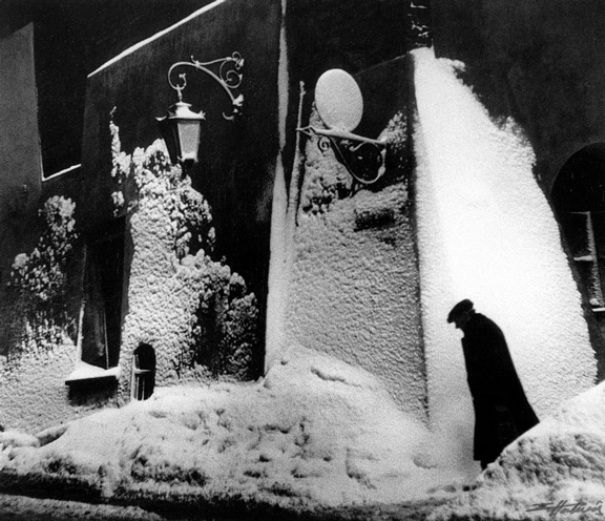Edward Hartwig (1909–2003) was a Polish photographer. Born on 6 September 1909 in Moscow and died on 28 October 2003 in Warsaw.. "Photographer who had a strong influence on the development of Polish photography in the sixties and seventies. Born on the 6th of September 1909 in Moscow and died on the 28th of October 2003 in Warsaw.
His father ran a photography workshop in Moscow and later in Lublin. Around 1925 Edward Hartwig took up photography himself. In the years 1930-32 he was interested in painting. He cultivated this passion for the rest of his life. In Lublin Hartwig befriended the clourist painter Zenon Kononowicz. From 1932 to 1934 he studied at the Graphisches Institut in Vienna. The well-known photographers Rudolf Koppitz and Hans Daimler were among his teachers. In 1929 in Lublin he presented his works for the first time. In 1938 he already worked as a freelance photographer. In the thirties he took part in exhibitions in Lublin and Warsaw alongside Polish pictorialists.
His father ran a photography workshop in Moscow and later in Lublin. Around 1925 Edward Hartwig took up photography himself. In the years 1930-32 he was interested in painting. He cultivated this passion for the rest of his life. In Lublin Hartwig befriended the clourist painter Zenon Kononowicz. From 1932 to 1934 he studied at the Graphisches Institut in Vienna. The well-known photographers Rudolf Koppitz and Hans Daimler were among his teachers. In 1929 in Lublin he presented his works for the first time. In 1938 he already worked as a freelance photographer. In the thirties he took part in exhibitions in Lublin and Warsaw alongside Polish pictorialists.
His style was formed under the influence of Jan Bułhak’s work. He also admired other artists from the Photoclub in Vilnius. Hartwig proved himself to be a master of portraying morning fogs in the forms of impressionistic landscapes from the Lublin region. He also excelled in capturing genre scenes referring to the tradition of Polish painting. Sporadically he would take portraits in the Old Town in Lublin. His style gradually began to resemble that of the Belgian pictorialist Leonard Misonne and the Frenchman Pierre Dubreuil, who referred to Constant Troyon’s painting. Hartwig also successfully employed the so-called noble techniques such as print toning (he toned bromide prints with gold), which he used to create his photographs from Kazimierz Dolny – a town which he especially fancied. He was a prominent figure of the Lublin Photographic Society, which was founded in 1936. In 1938 the society organized the Exhibition of Polish Photography.
In the final stages of his career he experimented with colour photography. Once again he addressed the issues of the abstract image and its coexistence with the figurative form. In his artistic conception literally every representation underwent the processes of posterization and elimination of semitones. He altered negatives using various methods, which was a way of fulfilling modernity’s postulates. By doing so he followed in the footsteps of such artists as Bronisław Schlabs (fifties). Hartwig aimed to individually and characteristically aestheticize the images, which had chiefly painting qualities rather than photogenic features. This resulted in "artistic formalism" (the term was first used by Jerzy Olk). Hartwig’s works may be compared to the painting conceptions of the American Aaron Siskind, who in the fifties searched for universal values in abstract expressionism. Many of the Polish artist’s photographs are allusive abstractions or longings for abstraction, in which the realism of fragments reminds us about palpable reality (for instance people, fruit). He emphasizes the structures of given imaginary forms, the graphicness of lines, the often dark tones. This is a distinguishing feature of his experiments. The modern experiment was an important fingerpost on the very long path of the artist’s seekings. For Hartwig photography was a material used not only to posterize but also to multiply (pop-art’s influence) and to deform. In his multi-aspectual work one may also notice a fascination with the beauty of the female body, which he often juxtaposed with abstract structures. Since the fifties his name is a synonym of "artistic photography".(Author: Krzysztof Jurecki, Art. Museum in Łódź, May 2004. culture.pl/en/artist/edward-hartwig )











No comments:
Post a Comment